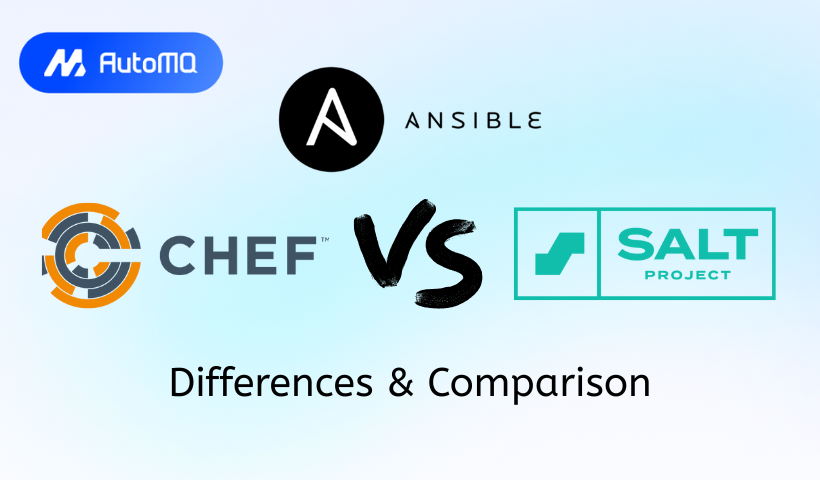Introduction
In the realm of modern IT operations and DevOps, configuration management (CM) tools are indispensable. They automate the setup, management, and maintenance of IT infrastructure, ensuring consistency, reliability, and speed. Among the leading contenders are Ansible, Chef, and Salt (SaltStack). While all aim to streamline infrastructure management, they do so with distinct philosophies, architectures, and strengths. This blog post offers a brief overview of each tool, followed by a focused comparison to help you select the best fit for your team and technical landscape.
Understanding the Tools
Let's start with a quick introduction to each of these powerful automation platforms.
Ansible: The Agentless Automator
Ansible is an open-source automation tool lauded for its simplicity and ease of use. It manages configurations, deploys applications, and orchestrates complex workflows without requiring agents on the target nodes. Ansible uses "playbooks," written in human-readable YAML, to define automation tasks [1]. Communication with managed systems typically occurs over SSH (for Linux/Unix) or WinRM (for Windows), where Ansible pushes small "modules" that execute the required tasks and then are removed. This agentless approach significantly lowers the barrier to entry and simplifies management.
![Ansible Overview [4]](https://static-file-demo.automq.com/6809c9c3aaa66b13a5498262/69099ba404ee57c4b2c973fa_67480fef30f9df5f84f31d36%252F685e620c454fab1b0a3d6bb1_kQsf.png)
Chef: The Developer's Toolkit for Infrastructure
Chef is a robust configuration management tool that treats infrastructure as code, leveraging the power and flexibility of the Ruby programming language. It generally employs a master-client architecture, where the Chef Server stores "cookbooks" (collections of "recipes" or configuration instructions). Chef Clients on managed nodes pull their configurations from the server and apply them [2]. Chef emphasizes a developer-centric workflow, with tools like Test Kitchen for testing infrastructure code and Chef InSpec for compliance as code, making it a strong choice for teams that embrace software development best practices for managing infrastructure.
![Chef Website [5]](https://static-file-demo.automq.com/6809c9c3aaa66b13a5498262/69099ba004ee57c4b2c9729f_67480fef30f9df5f84f31d36%252F685e6265758cc670a24b3ba3_sZSU.png)
Salt: The Speed and Event-Driven Maestro
Salt (often referred to by its original name, SaltStack, and now part of VMware Tanzu as well as the open-source Salt Project) is a powerful Python-based automation tool known for its high-speed remote execution and event-driven capabilities. It typically uses a master-minion (agent-based) architecture with communication over a fast ZeroMQ event bus, though it also supports agentless operations via Salt SSH [3]. Configurations are managed using "states" (usually written in SLS, a YAML/Jinja format), and its event-driven model with "beacons" and "reactors" allows for automated responses to system events, enabling self-healing and proactive management.
![SaltStack Website [6]](https://static-file-demo.automq.com/6809c9c3aaa66b13a5498262/69099ba004ee57c4b2c97295_67480fef30f9df5f84f31d36%252F685e6266975f3301aae9cea5_Lwsw.png)
Head-to-Head: Ansible vs. Chef vs. Salt
Now, let's delve into a comparative analysis of these three configuration management giants.
Architectural Approach
Ansible: Features an agentless architecture. A central control node orchestrates tasks by connecting to managed nodes via SSH or WinRM. This simplicity means no daemons to install or manage on the client side, reducing setup time and potential points of failure.
Chef: Primarily uses a master-client model. The Chef Infra Client (agent) must be installed on every managed node. This client pulls its configuration from a central Chef Infra Server. A Chef Workstation is used by administrators to create, test, and upload cookbooks to the server. This model ensures that nodes regularly check in and enforce their state.
Salt: Employs a master-minion architecture . Salt Minions (agents) are installed on managed nodes and establish a persistent connection with the Salt Master via a ZeroMQ message bus. This allows for very fast, bidirectional communication. Salt also offers Salt SSH for agentless command execution, providing flexibility.
Key Difference: Ansible's agentless nature is a major differentiator for ease of initial deployment, while Chef and Salt's agent-based models offer persistent connections and potentially richer, continuous management capabilities. Salt's additional agentless option via Salt SSH bridges this gap somewhat.
Configuration Language and Philosophy
Ansible: Uses YAML for its playbooks. YAML is known for its human readability and simplicity. While tasks are executed procedurally, Ansible modules themselves are designed to be declarative (defining a state). This blend makes it accessible to a wide range of users, including those without deep programming backgrounds.
Chef: Uses Ruby DSL (Domain Specific Language) for its recipes and cookbooks. This provides immense power and flexibility, allowing for complex logic and integration with Ruby libraries. However, it necessitates a good understanding of Ruby, making it more aligned with teams with strong development skills. The philosophy is "infrastructure as code" in a very literal, programmatic sense.
Salt: Uses SLS (SaLt State) files, which are typically written in YAML combined with Jinja2 templating. This approach offers a declarative way to define system states while allowing for dynamic content and logic through Jinja. It strikes a balance between the readability of YAML and the power of templating. Custom modules can be written in Python.
Key Difference: Ansible prioritizes simplicity with YAML. Chef offers maximum power and flexibility through Ruby. Salt provides a declarative YAML/Jinja approach that is powerful yet often more accessible than a full programming language like Ruby for configuration tasks.
Operational Model (Push, Pull, Event-Driven)
Ansible: Operates on a push model. The control node pushes configurations and commands to the managed nodes. This is excellent for ad-hoc task execution and orchestrating changes on demand.
Chef: Primarily uses a pull model. Chef Clients on managed nodes periodically poll the Chef Server for updated cookbooks and apply them. This ensures nodes autonomously maintain their configured state.
Salt: Is highly versatile. It primarily uses a push model for executing commands and applying states from the master. However, its ZeroMQ event bus makes it inherently event-driven. Minions can send events to the master (e.g., via Beacons), and the master can react to these events (via Reactors), enabling real-time automation. Minions can also be configured with schedulers for pull-like behavior.
Key Difference: Ansible is push-oriented. Chef is pull-oriented. Salt excels in push and event-driven scenarios, offering the most dynamic operational model of the three.
State Management and Data Handling
Ansible: Is largely stateless on the control node regarding managed node configurations. It relies on modules to intelligently query the current state of a resource before making changes. For secrets, it offers Ansible Vault to encrypt sensitive data within playbooks or variable files.
Chef: The Chef Server acts as a central repository for cookbooks, node objects (which store attributes about each node), and environment definitions. Nodes report their status back to the server. Sensitive data is often managed using "data bags," which can be encrypted, or through integration with external secret management tools like HashiCorp Vault.
Salt: The Salt Master manages state files (SLS). "Pillar" is Salt's system for distributing secure, targeted data (including secrets) to minions. "Grains" are static data collected about each minion. This structured approach to data management is a core feature.
Key Difference: All manage state, but Chef and Salt have more centralized and structured mechanisms for storing node data and distributing secrets (Chef Server/Data Bags, Salt Master/Pillar) compared to Ansible's more decentralized Vault approach for secrets and reliance on module intelligence for state.
Performance and Scalability
Ansible: Performance is generally good and can scale to thousands of nodes. For very large environments, the performance of the control node and the number of parallel forks become important. Ansible Tower/AWX can help manage large-scale deployments.
Chef: Designed to scale to large enterprise environments. The pull model distributes load, but the Chef Server itself needs to be robust and potentially clustered for very high availability and performance.
Salt: Known for its exceptional speed and scalability, particularly in remote execution. The ZeroMQ event bus allows for very fast communication with thousands of minions simultaneously from a single master. For extremely large deployments, Salt supports multi-master setups and syndic masters.
Key Difference: While all can scale, Salt is often highlighted for its raw speed and performance in large, dynamic environments due to its architecture.
Learning Curve and Ease of Adoption
Ansible: Generally considered to have the lowest learning curve. Its YAML syntax is easy to grasp, and the agentless nature simplifies initial setup. Many users can become productive quickly.
Chef: Often perceived as having the steepest learning curve, primarily due to the requirement to learn Ruby and Chef's comprehensive DSL and architectural components (Workstation, Server, Client, Berkshelf/Policyfiles).
Salt: Presents a moderate to steep learning curve. While SLS (YAML/Jinja) is relatively accessible, mastering Salt's full feature set (event system, reactors, beacons, Salt Cloud, etc.) can take time and effort.
Key Difference: Ansible is typically the quickest to get started with, followed by Salt for core functionality, with Chef often requiring the most upfront investment in learning.
Community Support and Ecosystem
Ansible: Boasts a very large, active, and diverse community. Ansible Galaxy provides a vast collection of community-contributed roles and collections, significantly speeding up development for common tasks.
Chef: Has a mature and well-established community, particularly strong in enterprise settings. Chef Supermarket offers a wide variety of community and vendor-supported cookbooks.
Salt: Has a dedicated and active open-source community. While its ecosystem of pre-built "formulas" (Salt's equivalent of cookbooks/roles) might not be as extensive as Ansible's or Chef's, it's growing, and the community is very responsive.
Key Difference: All have strong communities, but Ansible's reach and the sheer volume of Galaxy content often give it an edge in terms of readily available shared solutions.
Security Features
Ansible: Relies on SSH/WinRM for transport security. Ansible Vault provides robust encryption for sensitive data (like passwords or API keys) within playbooks or variable files.
Chef: Communication between Chef Clients, Workstations, and the Server is secured using SSL/TLS. Chef provides encrypted data bags for managing secrets, and recommends integration with dedicated secret management tools like HashiCorp Vault for more robust solutions. Chef InSpec is a powerful tool for security and compliance auditing.
Salt: All communication between the Salt Master and Minions is encrypted using AES encryption. Pillar is designed to securely deliver sensitive data only to authorized minions. Salt also has features for security auditing and vulnerability management, especially in its commercial VMware Tanzu Salt offerings.
Key Difference: All provide mechanisms for secure communication and secret management. Chef's InSpec offers a distinct advantage for compliance-as-code. Salt's Pillar system is integral for secure data distribution. Ansible Vault is straightforward for encrypting data at rest.
Making the Right Choice for Your Team
The "best" tool depends entirely on your specific needs, team skills, existing infrastructure, and company culture.
Choose Ansible if:
Simplicity, a gentle learning curve, and rapid time-to-value are top priorities.
An agentless architecture is a key requirement.
You need a versatile tool for a mix of configuration management, application deployment, and ad-hoc task orchestration.
Your team prefers YAML and a more straightforward approach over learning a programming language for CM.
Choose Chef if:
Your team has strong Ruby development skills or is willing to invest in learning it.
You require a highly flexible and programmatic way to define complex configurations.
A test-driven development approach to infrastructure (using Test Kitchen) and compliance-as-code (using InSpec) are important.
You are managing a large, complex enterprise environment where Chef's structured model and server-based architecture can provide robust governance.
Choose Salt if:
High-speed remote execution for a very large number of nodes is critical.
You need a powerful event-driven automation system to react to real-time infrastructure events.
Flexibility between agent-based and agentless modes (Salt SSH) is valuable.
Your team is comfortable with Python for potential extensions and prefers a YAML/Jinja approach for state definitions.
It's also worth noting that these tools are not always mutually exclusive. For example, an organization might use Salt for its speed in remote execution and event handling, alongside Ansible for specific application deployment playbooks if the team is more comfortable with Ansible for that particular task.
Conclusion
Ansible, Chef, and Salt are all formidable tools in the configuration management and automation landscape, each offering a unique set of features and philosophical approaches. Ansible leads with its simplicity and agentless design, making it highly accessible. Chef provides unparalleled power and flexibility for teams that treat infrastructure with the same rigor as software development, leveraging Ruby. Salt offers blazing speed, impressive scalability, and a sophisticated event-driven architecture for dynamic and responsive infrastructure management.
By carefully evaluating your team's expertise, the complexity and scale of your infrastructure, your operational model preferences, and your specific automation goals, you can select the configuration champion—or combination of champions—that will best serve your organization in 2025 and beyond.
If you find this content helpful, you might also be interested in our product AutoMQ. AutoMQ is a cloud-native alternative to Kafka by decoupling durability to S3 and EBS. 10x Cost-Effective. No Cross-AZ Traffic Cost. Autoscale in seconds. Single-digit ms latency. AutoMQ now is source code available on github. Big Companies Worldwide are Using AutoMQ. Check the following case studies to learn more:
Grab: Driving Efficiency with AutoMQ in DataStreaming Platform
Palmpay Uses AutoMQ to Replace Kafka, Optimizing Costs by 50%+
How Asia’s Quora Zhihu uses AutoMQ to reduce Kafka cost and maintenance complexity
XPENG Motors Reduces Costs by 50%+ by Replacing Kafka with AutoMQ
Asia's GOAT, Poizon uses AutoMQ Kafka to build observability platform for massive data(30 GB/s)
AutoMQ Helps CaoCao Mobility Address Kafka Scalability During Holidays
JD.comx AutoMQ x CubeFS: A Cost-Effective Journey at Trillion-Scale Kafka Messaging
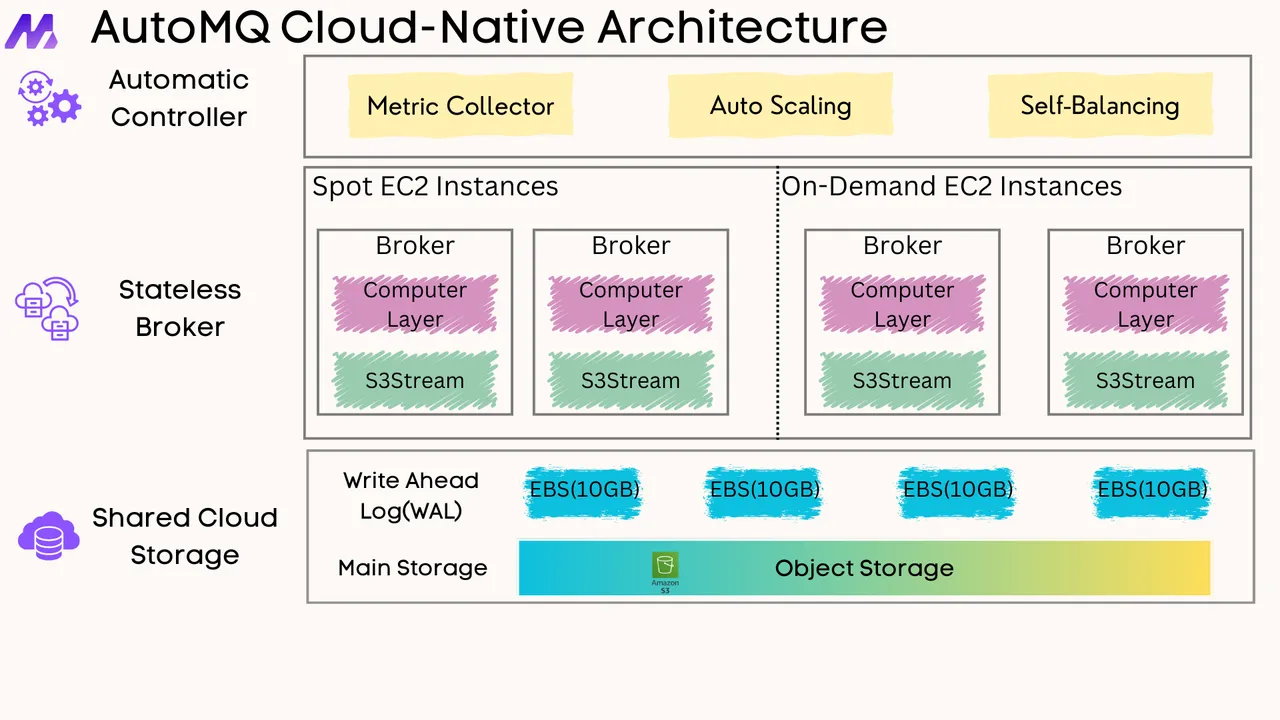





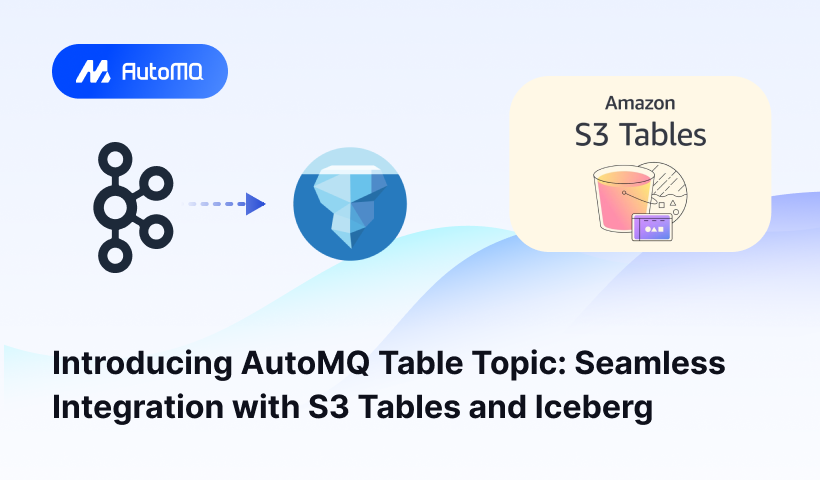
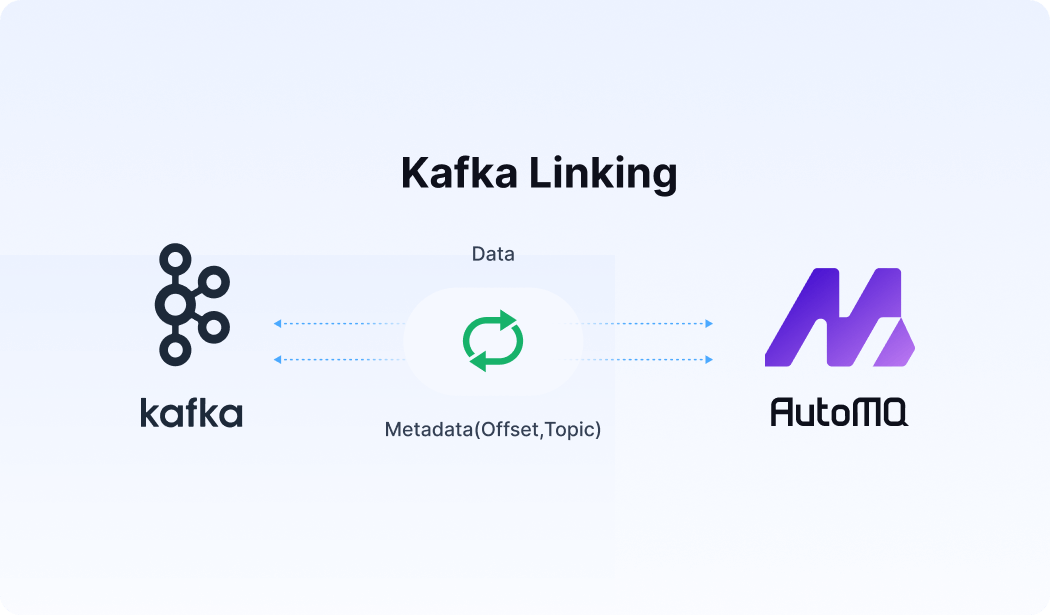




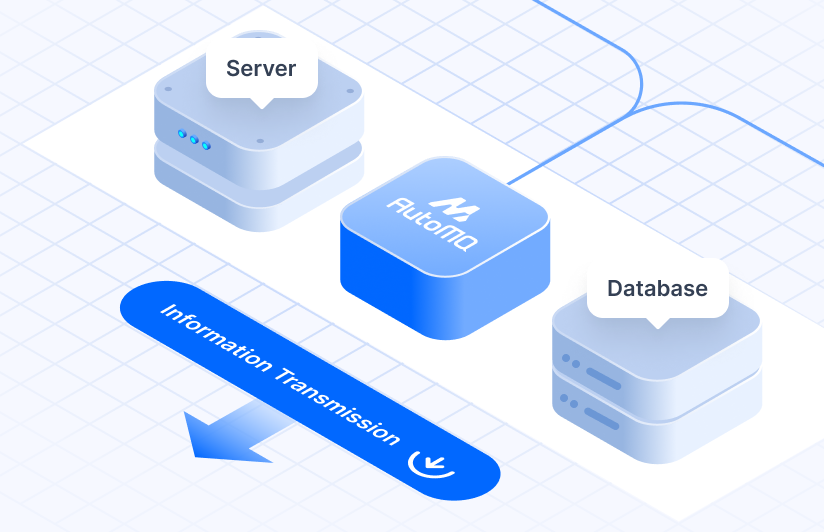



.png)
